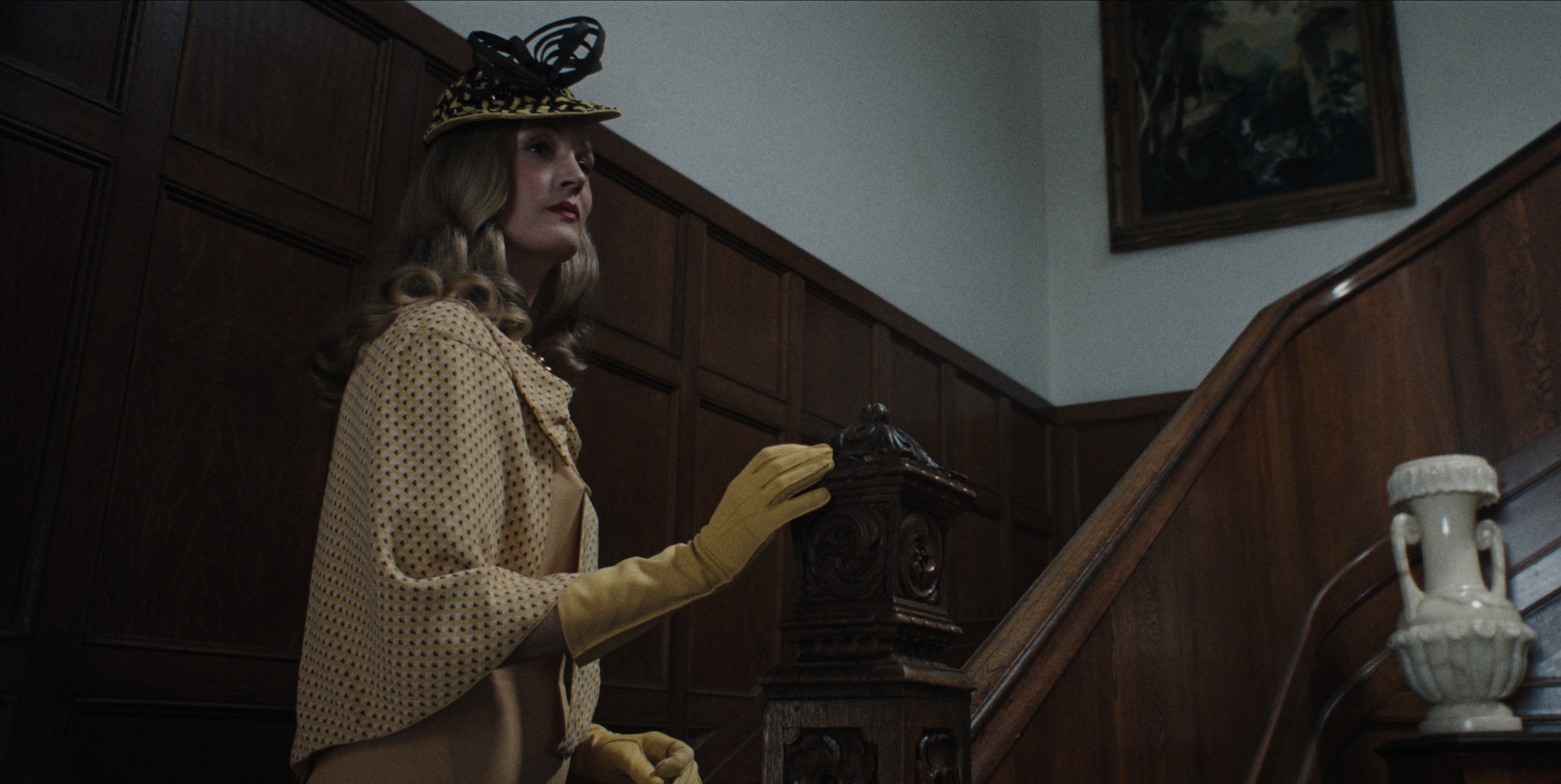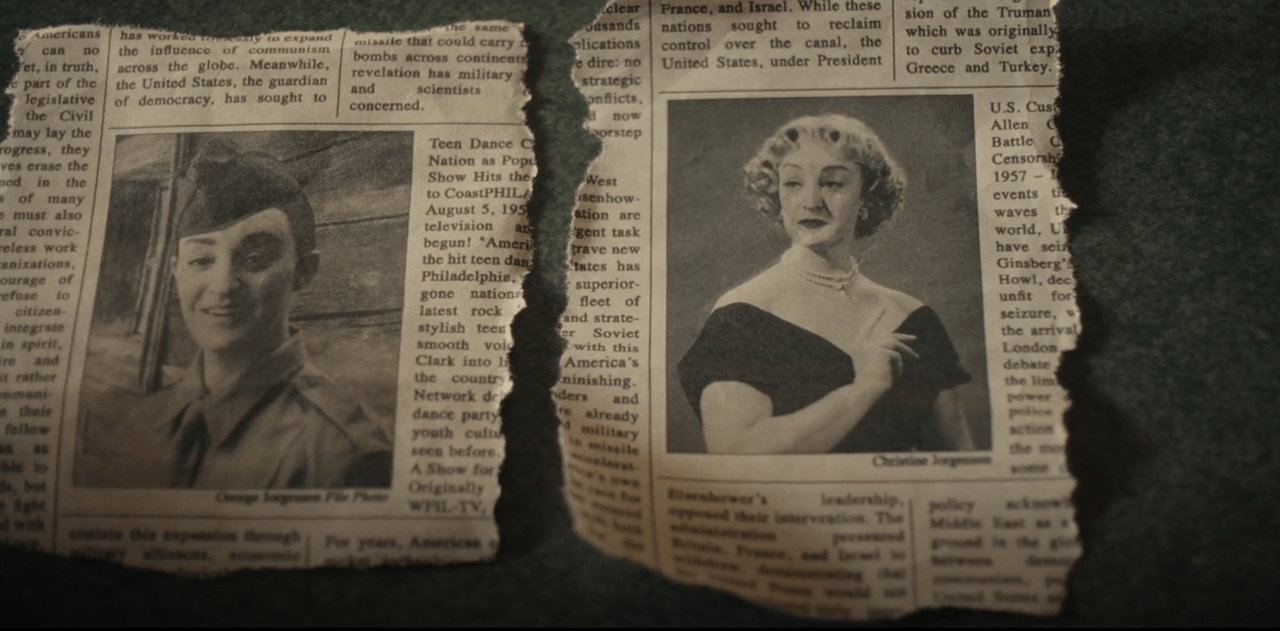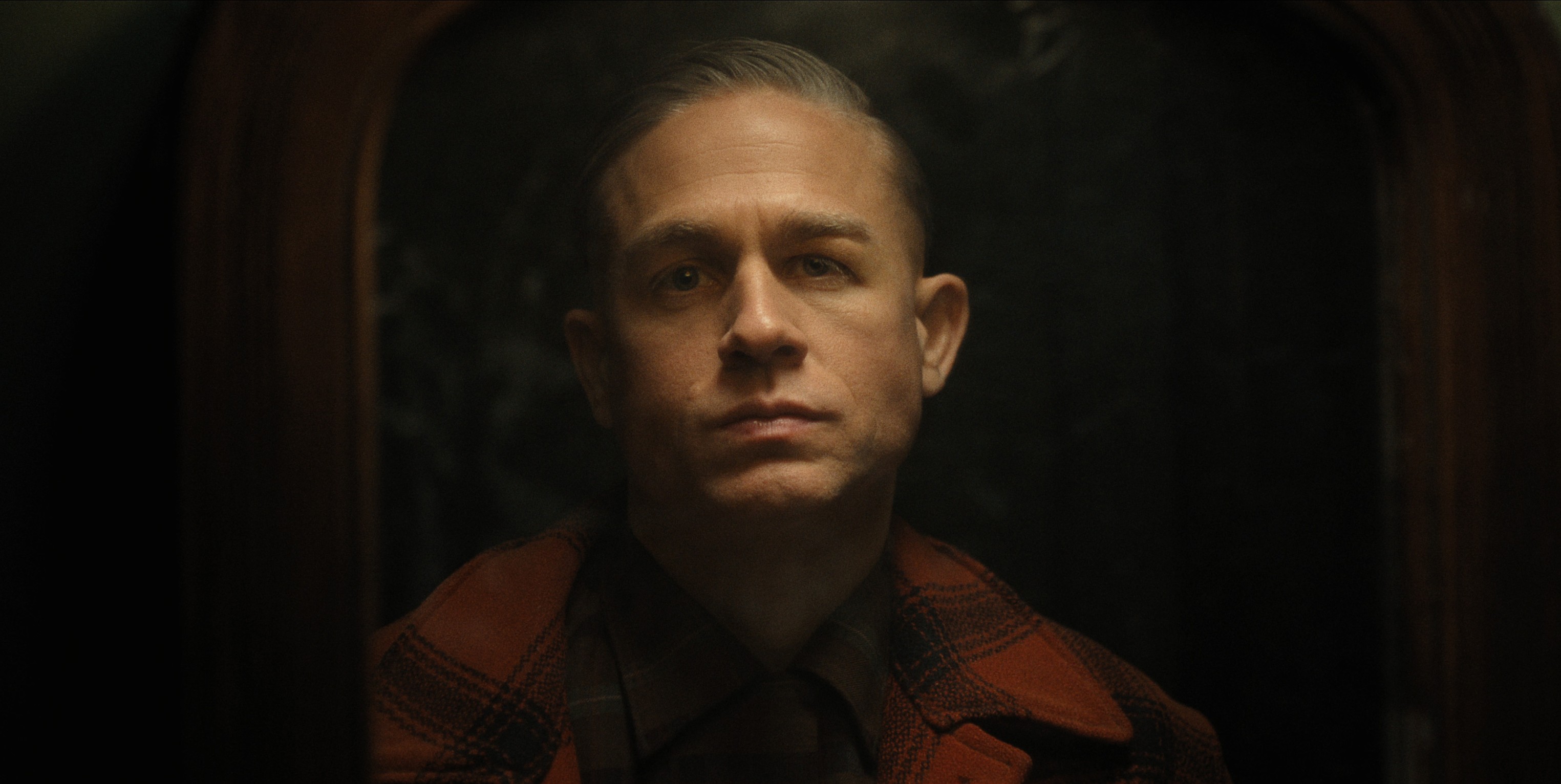Co-created by Ryan Murphy and Ian Brennan, Netflix’s ‘Monster: The Ed Gein Story’ is a sequel to ‘The Jeffrey Dahmer Story’ and ‘The Lyle and Erik Menendez Story.’ This time, the story draws attention to the life of body snatcher turned serial killer Ed Gein, whose criminal activity during the 1940s and 60s inspired several staples of popular fiction, such as Alfred Hitchcock’s ‘Psycho’ and Tobe Hooper’s ‘The Texas Chain Saw Massacre.’ The Netflix biographical crime drama channels that era’s consciousness and examines the role of Ed’s life and legend in crafting it. To that end, it also sheds light on two contemporaneous historical figures, Ilse Koch, a German war criminal also known as “The Beast of Buchenwald,” and Christine Jorgensen, an actor and transgender activist who was the first to become widely known for having sex-reassignment surgery. SPOILERS AHEAD.
Ed Gein’s Conversation With His Two Idols is Entirely a Creation of His Mind
During his time in the Central State Hospital for the Criminally Insane, Ed Gein demanded three ham radios in the hopes of conversing with two of his role models: Ilse Koch and Christine Jorgensen. While the former spends her days in prison after being convicted of committing war crimes, the latter sits at the heights of her success as an artist-activist, and this sets up the stage for a series of revelatory exchanges. With one ham radio being delivered to the Koch and Jorgensen each, Ed appears to sync up his radio signals and talk to them about his lived experiences, and how chunks of them are moulded after them. However, both conversations end up serving as a reality check, not just because of what Koch and Jorgensen say, but because the resident psychiatrist confirms that Ed Gein never had a conversation with them in the first place. Instead, the serial killer dons their persona and talks to themselves, creating the delusion of a radio-based communication.

Ed Gein begins his talk with an imagined version of Ilse Koch first, bringing up the similarities between her works with human skin and his recreation of the same. However, Koch firmly denies this allegation and explains that popular representations of her are a corrupted version of the truth with no validity. Going a step further, she compares the protagonist with herself, as a suppressed ‘Übermensch’ who deserves to take the world by storm. In contrast, Ed’s conversation with his personal rendition of Christine Jorgensen turns into a self-reflective exercise, with him regurgitating what he learnt from his psychotherapy sessions. In particular, Jorgensen challenges his desire to wear traditionally feminine clothes and murder women, describing the impulse as something akin to Gynephilia, which causes Ed to often lash out and stir trouble, both directed at himself and the outside world.
The Real Ilse Koch and Christine Jorgensen Had No Contact With the Serial Killer
While the real-life Ed Gein was allegedly inspired by creative works and legends surrounding Ilse Koch, the two never had any form of interaction or direct communication, as per public knowledge. According to numerous reports, the serial killer was drawn to the sensationalized accounts of Ilse Koch’s inhumane practices, which involved the alleged use of tattooed human skin for the creation of lampshades and other items. This macabre form of fashion is depicted in the Netflix series in the form of picture books that Ed obsesses over. Over time, he recreates the grotesque creations with the skin he collects by body snatching and murdering people, and openly names Koch as his inspiration. Notably, the imaginary conversation between the two is followed by a sequence of the war criminal taking her own life by hanging herself in the prison cell. In real life, Koch reportedly hanged herself on 1 September 1967 at Aichach women’s prison.

The blend of fact and fiction does not stop with Ilse Koch, as Christine Jorgensen’s integration into the narrative is also creatively enhanced by the writing team of ‘Monster: The Ed Gein Story.’ Based on real-life reports, police found books about Jorgensen’s sex-reassignment operation on Ed’s shelves upon investigating the serial killer’s house. This appears to be the driving force behind the show’s sequences surrounding the New York celebrity, which involves Ed channeling many of his pent-up desires through her. The real Jorgensen, however, was not reported to have had any contact with Ed Gein, and while he might have been inspired by her life on some level, the show’s emphasis on that idea is largely due to its dramatized narrative. Both the real-life figures create a spectrum of influences for the serial killer’s character, as the accounts of their life and histories get twisted and contorted beyond recognition in his mind.
Read More: Monster: Are Ed Gein’s Skin Suit and Face Mask Real, Prosthetic or CGI?


